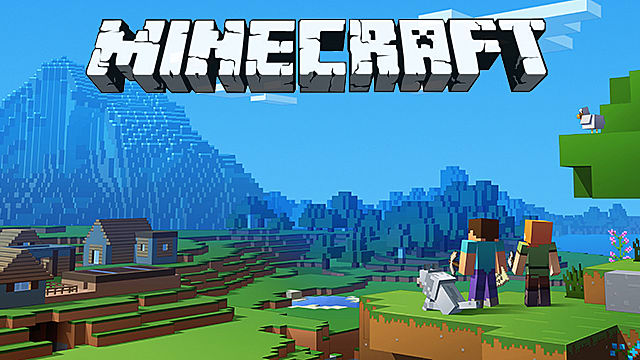
Despite veering slightly off the technical definition of an indie game, throughout Minecraft’s rise to fame it very much represented the truest form of the independent genre, its focus on content, and its content geared towards player value. Minecraft offers players a limitless sandbox in which myriad materials, structures, and NPCs generate endless possibilities.
First and foremost, I did not enjoy playing this game. In fact, I would go as far as to say I genuinely hated it. I despised the tedious necessity for harvesting resources, and could not find any motivation to learn the seemingly infinite crafting combinations. I never found a purpose, and the few hours I did spend wandering aimlessly after my friends were quite unmemorable. But it must be said; Minecraft is an amazing game.
I felt almost overwhelmed by all the options; specifically, there was too much I needed to do. I needed resources to build; I needed a crafting table; I needed a home or shelter; I needed to be able to defend myself; I needed to feel safe exploring the landscape; I needed to contribute to the server. Minecraft‘s seemingly infinite direction can be quite misleading; it is not meant to overwhelm, but rather to empower. Players are given all the tools necessary to enforce one’s imagination on the game.
It is a little ironic that the most valuable aspect of the game had such a deterrent effect on my enjoyment of it, but a part of me wishes I had invested more time into exploring the concept of possibility. The videos below, tagged Presentation Material, demonstrate the multitude of activities in which the Minecraft community indulges. From befriending ducks to harvesting blue pickles, from killing other players to building enormous structures, there are so many options.
The second video demonstrates the intrinsic value of a simple game mechanic, manifest in the form of a “Block Save Montage,” almost three and a half minutes of a player falling to death, only to be saved by the last minute placement of a block of dirt. With so much satisfaction engendered from such simplicity, I can’t help but wonder why I couldn’t find my own value in the game.
I attribute my lack of enjoyment to an innate stubbornness, developed over the course of my time playing competitive levels of League of Legends and Rocket League. I have decided that playing a video game is much like reading an english class book; given identical schemas, the value we find is entirely dependent on what we notice. In Minecraft, focused on a purpose and begging for direction, I failed to notice all the wondrous opportunity.
I still refuse to play Minecraft, but I cannot help but appreciate all the related material that pops up on YouTube, Facebook, or Reddit. I’ve found myself vicariously enjoying the massive player built structures that appear overnight in community servers, empathizing with the streamer that throws her diamond ore into the lava, and even despair as your new pet duck falls to its unfortunate demise.
Minecraft is a free game, designed for the sake of its players, and represents the best of what indie games can be. This game has developed from an ambiguous, open-ended sandbox into a vast community of servers and mods. The culmination of player imagination is manifest in the intense variety of server environments, interface quality-of-life mods, and repurposed servers for PVP and other specific communities. The limitless concept that drives Minecraft has even been purposed towards education, teaching students to delegate resources, practical maths, and spatial awareness. Although I will never play this game, I implore you to explore its potential, and appreciate its value.
Presentation Material:
https://www.youtube.com/watch?v=Mn8H5CfGqq4
https://www.theguardian.com/technology/2016/jan/22/minecraft-education-edition-why-its-important-for-every-fan-of-the-game
